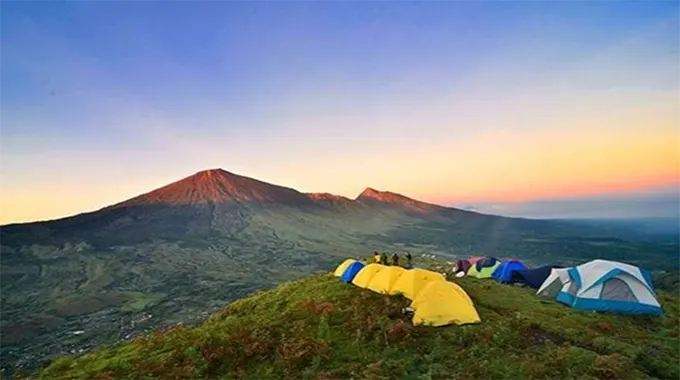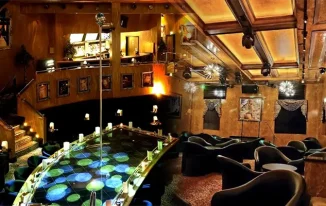Mount Rinjani, the second highest volcano in Indonesia, stands proudly on the island of Lombok, reaching an impressive height of 3,726 meters. It offers one of the most breathtaking trekking experiences in Southeast Asia, drawing adventurers from all over the world. Trekking Mount Rinjani is not just a hike; it’s a journey through diverse landscapes, rich cultural history, and awe-inspiring natural beauty. This article explores the key aspects of the Mount Rinjani trekking experience, providing essential information for prospective trekkers.
The Trekking Routes
There are several routes to trek Mount Rinjani, with the most popular being the Senaru and Sembalun routes.
Senaru Route: This route is often preferred by those looking to experience the dense tropical forests of Rinjani. Starting from Senaru village at 600 meters, trekkers pass through lush jungle teeming with wildlife before emerging above the tree line to panoramic views of the crater rim.
Sembalun Route: Starting from Sembalun village at 1,150 meters, this route offers a more gradual ascent. The landscape here is dominated by savannah, providing wide-open views and the opportunity to spot deer and other wildlife. This route is generally considered easier on the legs due to its more gradual incline.
The Experience
Day 1: Reaching the Crater Rim
Most treks begin early in the morning to take advantage of the cooler temperatures. The first day typically involves a 7-8 hour hike through varied landscapes. Starting in the early morning light, trekkers make their way through forests or grasslands, depending on the chosen route. By afternoon, the climb becomes steeper as the path ascends towards the crater rim. The reward for this effort is the stunning view from the rim, where the emerald-green Segara Anak Lake lies nestled within the massive caldera, surrounded by jagged peaks. Camp is usually set up here, and trekkers can enjoy a well-earned rest while watching the sunset over this magnificent landscape.
Day 2: Summit Attack and Descent
The second day begins in the pre-dawn darkness. Starting the summit push around 2 a.m. ensures that trekkers can reach the peak in time to witness the sunrise. This part of the trek is the most challenging, as the terrain is steep and consists of loose volcanic scree, making progress slow and arduous. However, the view from the summit at sunrise makes every step worthwhile. On a clear day, the vistas stretch across Lombok, the Gili Islands, and even as far as Bali. After soaking in the panoramic views and taking the obligatory summit photos, trekkers begin the descent. The loose scree makes for a quick descent back to the crater rim, where breakfast awaits.
The trek usually continues down to Segara Anak Lake. Here, trekkers can relax and soak in the hot springs, which are believed to have healing properties. The lake itself is also an excellent spot for a refreshing swim. After a restful break, the trek continues either back to Senaru or Sembalun, depending on the route taken.
Preparation and Gear
Trekking Rinjani Lombok requires a good level of fitness and proper preparation. The ascent is strenuous, and the high altitude can pose challenges for those not acclimatized. Here’s a checklist of essential gear:
- Footwear: Sturdy trekking boots with good ankle support and grip are essential.
- Clothing: Layers are key. Lightweight, moisture-wicking clothes for the ascent, warm layers for the summit push, and a waterproof jacket are recommended.
- Sleeping Gear: A warm sleeping bag and a sleeping mat, as temperatures can drop significantly at the higher altitudes.
- Trekking Poles: Useful for stability on the loose scree and steep descents.
- Headlamp: Essential for the early morning summit push.
- Hydration and Snacks: Carry enough water and high-energy snacks to keep you fueled.
Guided Treks vs. Independent Treks
While it is possible to trek independently, most trekkers opt for guided tours. Local guides bring invaluable knowledge of the terrain, culture, and history of the region. Additionally, they handle logistics, including carrying food, camping equipment, and organizing meals, allowing trekkers to focus solely on the climb. Guided treks also contribute to the local economy, providing jobs and income for the local communities.
Environmental Considerations
Mount Rinjani is part of the Gunung Rinjani National Park, a protected area rich in biodiversity. It’s essential for trekkers to minimize their environmental impact. This includes following the “Leave No Trace” principles: pack out all rubbish, stick to established trails, and avoid disturbing wildlife. Recent initiatives by local organizations and trekking companies have aimed to reduce the environmental impact of trekking, such as clean-up treks and educating trekkers on sustainable practices.
Cultural Significance
Mount Rinjani holds significant cultural and spiritual importance for the local Sasak and Balinese people. The Segara Anak Lake and the peak are considered sacred, and many locals make pilgrimages to the volcano for religious ceremonies. Respecting these cultural traditions and the natural environment is an integral part of the trekking experience.
Conclusion
Trekking Mount Rinjani is a challenging but incredibly rewarding adventure. From the lush forests and sweeping savannahs to the awe-inspiring views from the crater rim and summit, every step of the journey offers something spectacular. Proper preparation, respect for the environment, and an understanding of the cultural significance of this majestic volcano will ensure an unforgettable experience. Whether you’re an experienced trekker or a determined novice, Mount Rinjani offers an adventure that is both physically demanding and deeply enriching, leaving you with memories that will last a lifetime.











